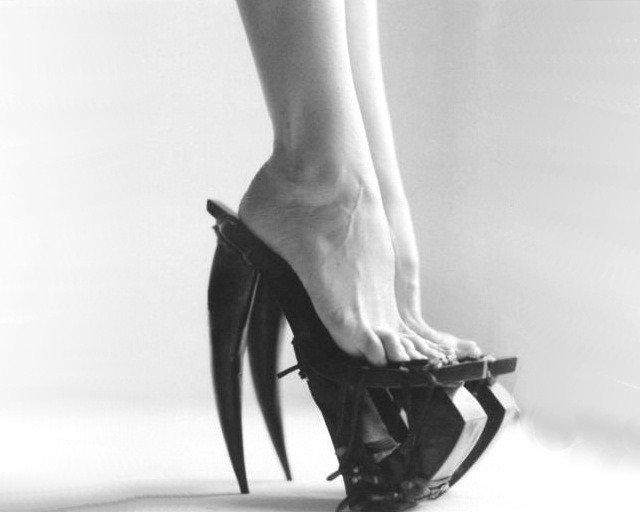While Eugene was punk for his time - rejecting academic perfection in art with substitution for free brush colors, anti-monarchist art is best set upon a more decrepit pedestal (cue "God Save the Queen").
Robert Capa's bleakly and characteristically monochromatic scenario best slips the dagger to Romanticism's throat - the masculine, Ancient Greek harping and championing of combat is folly. Images of civilians darting during1939 air raids and the contorted bodies of Spanish Civl War soldiers can be described as brute and grotesque - but certainly ever real - as if to blare "War is never beautiful and romantic. Fuck your cinematic autherism." Robert Capa brought emotional poignance to reality in his photography - seemingly rejecting Romanticism.
In his "On ***** Media," Hovagimyan speaks of philosopher Wittgenstien's Logical Positivism - submitting all activity, and, thus, art as cross-lingual communication in structure. This posits much more innocence than Plato, who would grow blush in the face to such preposterous claims (rather Book X of The Republic era Plato would be the ever-wrathful), submitting all art as mimetic. In imagining the portrait of a chair, the first layer of the "ideal" structure is fixed in God's perfection - for He creates all things - and the second layer in the carpenter of the tangible structure - the chair's furnisher. Thus, the painter or poet knows much less than the "ideal" for she/he only holds a representation of a representation. The artist is twice removed from genuine knowledge. Plato proposed an epistemological argument: all knowledge in art is flawed and the artist doesn't hold any knowledge (such knowledge exists only in the ideal, which the philosopher has access to via the armchair). Plato, hence, submitted art as dangerous and flawed.
Yet, it seems that there is an innately healthy articulation between emotional sensation, symbolic connection, and aesthetic realism in art (which Plato, perhaps, never sensed). This brings people together in celebration - from Paris Fashion Week(s) to Chaos to Couture. The isolation of reality in place for Freudian irrationality is only natural with rejection, hence Surrealism and pre-cursor Dadaism (or, more entirely, the avant-garde). This seems to be the true homeland for our generation's art, a generation a bit destroyed by media influx, economic hopelessness, and systematic dream-burrying. Art of the 1920s saw beauty and celebration of human feats had been substituted for the entirely illogical (a reflection upon human meaningless and animalism), fantastical, and sometimes sexual underbelly of the human psyche. Take a reproduction of the alphabet - Luis Aragon's Suicide, included in Picabla's Cannibale. Meaning is seemingly lost, like WWI's lost young soldiers.
Fashion photographer Guy Bourdin well depicted the celebration of the surreal with such ephemeral emotional connection in his articling for Vogue France 1955 in his surreal fashion films. Carnal, bare, and fetish-like, Bourdin's early depictions still resonate within the avant-garde fashion forces from Rick Owens to Aoi Kotsuhiroi. The influence can be traced to Dogme 95 films of Lars von Trier, Thomas Vinterberg, and Harmony Korine that incorporate Super 8 and 16 mm film to project the bare basics of art - emotional connectivity via the grainy poignance of something aesthetically thwarted.
Aoi Kotsuhiroi Heels
Hence, the vulgarly human art - punk and raw in nature - requiring no airs and an open mind from the audience is the future. There is no room for romanticizing in the strictly DIY interaction (not meaning half-rate "hipster art"of no technical quality, thought, knowledge or vision for the sake of production - plaintive art requires effort, dedication and altruism). Performance art, as I noted in my previous post, rivets a pang of beautifully human inter-connection. Anything not offered for blatant reaction in a one-layered context (read: Andy Warhol's Piss Paintings - the only artist justified in his canvas-pissing is Jackson Pollock) or under ostentatious silken covers can achieve this - and, thus, thank Plato for the Death of Romanticism.



No comments:
Post a Comment